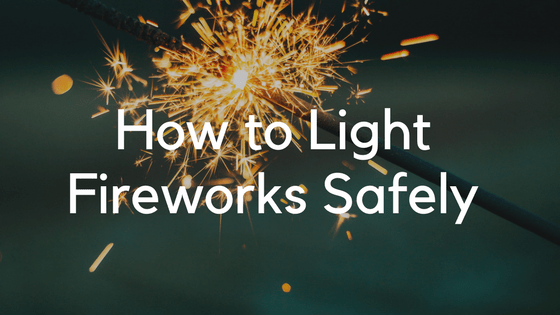Fireworks are lots of fun but it’s important to remember they are explosives that can be extremely dangerous if not treated properly. If you handle them with care, you have less chance of hurting yourself than you do chopping vegetables, so start by getting all the facts and learning how to light fireworks safely before Bonfire Night begins.
Fireworks come in four categories
There are four types of fireworks, but only three are available to the public. Each has different safety requirements associated with them. It’s important to recognise which type of firework you are using so you can ensure the safety of you and everyone around you.
Category 1: They are the least dangerous fireworks which pose a minimal hazard. Category 1 fireworks are usually indoor fireworks.
Category 2: Also known as garden fireworks, these are classified as category 2 because they have a safety distance of 5 metres.
Category 3: These are classed as display fireworks and require a safety distance of 25 metres.
Category 4: To be used by professionals only. These are extremely dangerous to anyone who is untrained.
Preparation is important!
Lighting the fireworks: Choose one person to be in charge of lighting the fireworks and bonfire. There doesn’t need to be more than one person handling the fireworks at a time
Is your garden big enough? Make sure your garden can accommodate the type of fireworks you will be using. Check the garden is big enough for the safety distance required.
Check for obstructions: Make sure there are no overhanging trees or obstructions.
Read instructions carefully
All fireworks are different, which means they behave differently too.
Fountain fireworks come in a cone shape which makes it hard to attach to something. Place these on a flat surface such as a paving slab to minimise the risk of them falling over.
Rockets should be launched from appropriate tubes. It’s important the rocket stays upright, so don’t attempt to light a rocket with a broken stick.
Place on a flat surface
To make a flat surface on the lawn, lay a wide piece of timber on the grass. Make sure you soak this in water beforehand. Check there are no leaves or foliage where you are lighting the fireworks as these are especially dangerous. Look at the plants and grass. If it’s now yellow and dead, it’s not a good place to be setting off fireworks. Concrete or a grass that is wet is the best.
Keep water nearby
Keep a bucket of water nearby and use to soak used fireworks and duds. Put all used sparklers in the water bucket. After all the fireworks have been lit and all used fireworks and duds have soaked for at least 10 minutes and then throw away fireworks in an outside bin.
Wait 20 minutes if the firework is a dud
If a firework doesn’t go off straight away or doesn’t work after the fuse burns all the way down, then it is probably a dud. You should wait at least twenty minutes after lighting the fuse and then place the dud into the bucket of water. Wait until each firework is finished before lighting the next.
Top Tips to remember
- NEVER smoke around fireworks.
- DON’T light fireworks on a windy night.
- DO use a long-tipped lighter for lighting fireworks.




